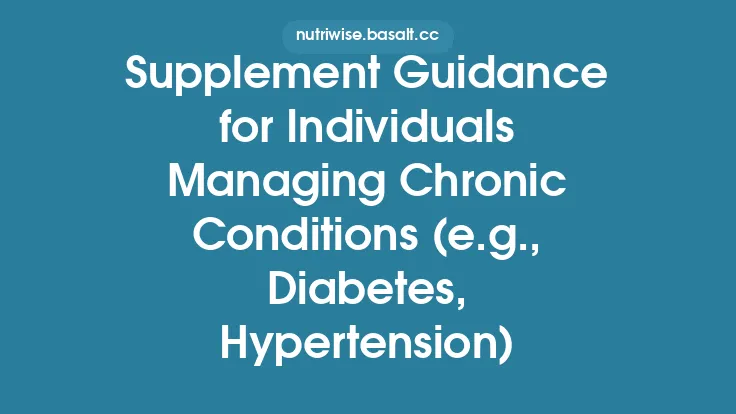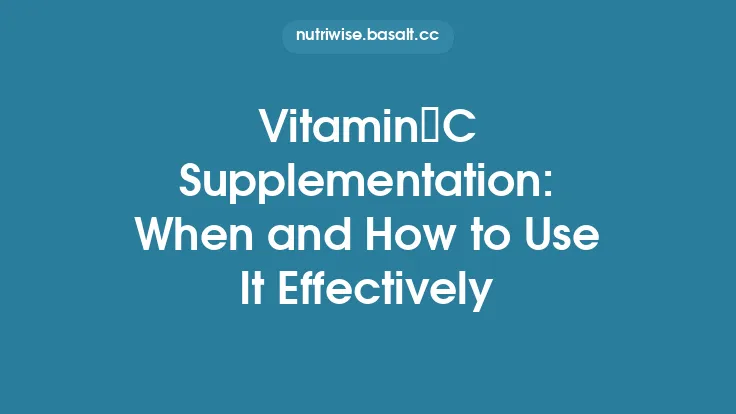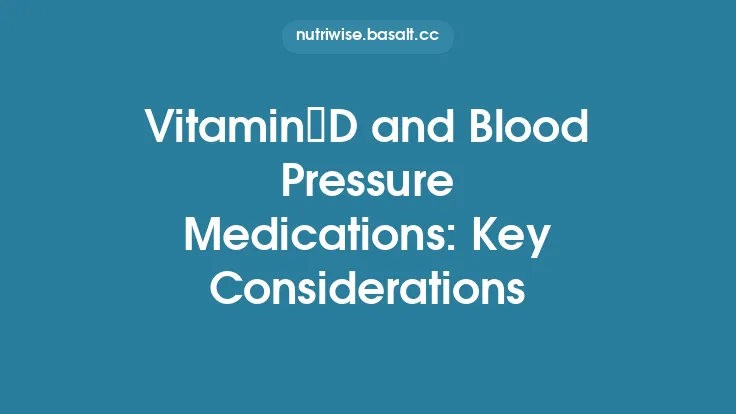When you’re prescribed an ACE inhibitor (angiotensin‑converting enzyme inhibitor) and a diuretic at the same time, one of the most important micronutrients to keep an eye on is potassium. This mineral plays a critical role in nerve transmission, muscle contraction, and heart rhythm. Because both drug classes can push potassium levels in opposite directions, managing this balance becomes a central part of safe, effective therapy. Below is a comprehensive guide that walks you through the physiology, the ways each medication class influences potassium, practical strategies for monitoring and adjustment, and evidence‑based dietary and supplemental recommendations.
Understanding ACE Inhibitors and Their Effect on Potassium
Mechanism of Action
ACE inhibitors block the conversion of angiotensin I to angiotensin II, a potent vasoconstrictor. By reducing angiotensin II levels, they lower systemic vascular resistance and decrease aldosterone secretion from the adrenal cortex.
Aldosterone Suppression and Potassium Retention
Aldosterone normally promotes sodium reabsorption and potassium excretion in the distal nephron. When aldosterone is suppressed, the kidney’s ability to excrete potassium diminishes, leading to a tendency toward hyperkalaemia (elevated serum potassium). This effect is dose‑dependent and more pronounced in patients with:
- Chronic kidney disease (CKD) or reduced glomerular filtration rate (GFR)
- Diabetes mellitus (especially with nephropathy)
- Concomitant use of potassium‑sparing diuretics or potassium supplements
Common ACE Inhibitors
- Enalapril
- Lisinopril
- Ramipril
- Captopril
- Benazepril
All share the same class effect on potassium, though individual pharmacokinetics may influence the timing of peak serum changes.
Understanding Diuretics and Their Effect on Potassium
Diuretics are a heterogeneous group, and each subclass influences potassium differently.
1. Loop Diuretics (e.g., furosemide, bumetanide, torsemide)
- Act on the Na⁺‑K⁺‑2Cl⁻ transporter in the thick ascending limb.
- Produce a strong natriuretic effect and potassium loss due to increased distal tubular flow and sodium delivery, which enhances potassium secretion.
- Risk of hypokalaemia (low serum potassium) is high, especially at higher doses.
2. Thiazide‑type Diuretics (e.g., hydrochlorothiazide, chlorthalidone)
- Inhibit the Na⁺‑Cl⁻ cotransporter in the distal convoluted tubule.
- Also promote potassium excretion, though generally less aggressively than loops.
- Hypokalaemia risk is moderate; may be compounded by high dietary sodium intake.
3. Potassium‑Sparing Diuretics (e.g., spironolactone, eplerenone, amiloride, triamterene)
- Directly antagonize aldosterone (spironolactone, eplerenone) or block ENaC channels (amiloride, triamterene).
- Increase serum potassium by reducing its excretion.
- Often prescribed alongside ACE inhibitors for synergistic blood‑pressure control and cardioprotective benefits, but they markedly raise hyperkalaemia risk.
4. Combination Diuretics
- Fixed‑dose products (e.g., hydrochlorothiazide/amiloride) aim to balance sodium loss with potassium retention.
- The net effect on potassium depends on the relative potency of each component.
The Physiological Balance of Potassium
Normal Serum Range
- 3.5–5.0 mmol/L (millimoles per liter) is the accepted reference interval for most laboratories.
Why Balance Matters
- Hypokalaemia can cause muscle weakness, cramps, constipation, and life‑threatening cardiac arrhythmias (e.g., ventricular tachycardia).
- Hyperkalaemia may lead to paresthesias, muscle fatigue, and characteristic ECG changes (peaked T waves, widened QRS) that can progress to asystole.
Renal Handling Overview
- Approximately 90% of filtered potassium is reabsorbed in the proximal tubule and loop of Henle.
- The distal nephron (principal cells of the collecting duct) fine‑tunes excretion, heavily influenced by aldosterone, sodium delivery, and flow rate.
Balancing ACE Inhibitors and Diuretics: Practical Strategies
1. Choose the Right Diuretic Subclass
- If hyperkalaemia risk is high (e.g., CKD stage 3–4, baseline potassium >4.5 mmol/L), favor a loop diuretic rather than a thiazide or potassium‑sparing agent.
- If hypokalaemia is a concern (e.g., high-dose loop diuretic, low dietary potassium), consider adding a thiazide‑type or a low‑dose potassium‑sparing diuretic, but monitor closely.
2. Dose Titration
- Start ACE inhibitors at a low dose and titrate upward while checking potassium after each increment.
- For diuretics, begin with the lowest effective dose; increase only if blood‑pressure or volume control is inadequate.
3. Timing of Administration
- Taking ACE inhibitors in the morning and diuretics later in the day can sometimes blunt the peak potassium rise, but evidence is limited. Consistency is more important than timing.
4. Use of Combination Products
- Fixed‑dose combinations (e.g., ACE inhibitor + hydrochlorothiazide) simplify regimens but require vigilant monitoring because the thiazide component can mask early potassium shifts.
Monitoring Potassium and Renal Function
| Parameter | Frequency | Rationale |
|---|---|---|
| Serum potassium | Baseline, 1–2 weeks after initiation or dose change, then every 3–6 months (or more often if risk factors) | Detect early hyper‑ or hypokalaemia |
| Serum creatinine & eGFR | Same schedule as potassium | ACE inhibitors can reduce GFR; renal impairment amplifies potassium changes |
| Blood pressure | Every visit or home monitoring | Guides diuretic dosing |
| ECG (if potassium >5.5 mmol/L or <3.5 mmol/L) | As clinically indicated | Identify arrhythmic risk |
Action thresholds (general guidance):
- >5.5 mmol/L – consider dose reduction, discontinue potassium‑sparing agents, or initiate potassium‑lowering therapy (e.g., sodium polystyrene sulfonate, patiromer) if persistent.
- <3.5 mmol/L – evaluate for diuretic over‑use, dietary insufficiency, or gastrointestinal losses; consider potassium supplementation or reducing diuretic dose.
Dietary Recommendations
Foods Rich in Potassium (≈200–400 mg per serving)
- Bananas, oranges, apricots
- Potatoes (with skin), sweet potatoes
- Spinach, beet greens, kale
- Avocado, tomatoes, beans, lentils
- Yogurt, milk
Foods Low in Potassium (useful when hyperkalaemia is a concern)
- Apples, berries, grapes
- White rice, pasta, refined breads
- Cucumbers, cabbage, cauliflower
- Egg whites, lean poultry without skin
Practical Tips
- Portion Control: Even potassium‑rich foods can be safely consumed if portion sizes are moderated.
- Cooking Methods: Boiling vegetables and discarding the water can reduce potassium content by up to 50 %.
- Avoid Salt Substitutes: Many “low‑sodium” salts are potassium chloride and can dramatically raise intake.
- Read Labels: Processed foods often contain hidden potassium additives (e.g., potassium sorbate).
Supplement Considerations
| Situation | Recommended Action |
|---|---|
| Hypokalaemia (serum <3.5 mmol/L) | Oral potassium chloride (e.g., 20–40 mEq) divided throughout the day; avoid rapid IV infusion unless emergent. |
| Hyperkalaemia (serum >5.5 mmol/L) | Discontinue potassium supplements; consider potassium binders (patiromer, sodium zirconium cyclosilicate) if chronic elevation persists. |
| Concurrent Vitamin C or B‑Complex | Generally safe; high‑dose vitamin C can increase urinary potassium excretion modestly, but not clinically significant. |
| Herbal Products | Some herbal diuretics (e.g., dandelion) may affect potassium; discuss with healthcare provider before use. |
Caution: Over‑the‑counter potassium supplements are often marketed for “muscle cramp relief.” Patients on ACE inhibitors should avoid them unless specifically prescribed.
Clinical Scenarios Illustrating Management
Scenario 1: New Hypertensive Patient with Stage 2 CKD
- Medications: Lisinopril 10 mg daily, furosemide 40 mg daily.
- Baseline labs: K⁺ 4.2 mmol/L, eGFR 45 mL/min/1.73 m².
- Plan: Continue both drugs; monitor K⁺ and creatinine at 2 weeks, then every 3 months. Counsel on moderate potassium intake and avoidance of salt substitutes. If K⁺ rises >5.0 mmol/L, consider reducing furosemide dose or adding a low‑dose potassium binder.
Scenario 2: Elderly Patient on ACE Inhibitor and Thiazide Diuretic
- Medications: Enalapril 20 mg daily, hydrochlorothiazide 25 mg daily.
- Baseline labs: K⁺ 3.6 mmol/L, eGFR 70 mL/min/1.73 m².
- Plan: Increase dietary potassium (e.g., add a daily serving of banana). Re‑check K⁺ in 1 week. If still <3.5 mmol/L, add a low‑dose potassium supplement (10 mEq) or switch to a potassium‑sparing diuretic (e.g., add amiloride 5 mg) while reducing thiazide dose.
Scenario 3: Patient with Congestive Heart Failure on Triple Therapy
- Medications: Ramipril 5 mg daily, spironolactone 25 mg daily, furosemide 80 mg daily.
- Baseline labs: K⁺ 5.2 mmol/L, eGFR 55 mL/min/1.73 m².
- Plan: High hyperkalaemia risk. Reduce spironolactone to 12.5 mg, maintain furosemide, and schedule K⁺ check in 3 days. If K⁺ remains >5.5 mmol/L, consider discontinuing spironolactone and using a non‑potassium‑sparing diuretic regimen.
Patient Counseling Checklist
- Explain why potassium matters for heart rhythm and muscle function.
- Describe medication effects: ACE inhibitors → retain potassium; diuretics → may lose or retain potassium depending on type.
- Set expectations for lab monitoring: frequency, what the numbers mean, and when to call the clinic.
- Provide dietary guidance: list of high‑ and low‑potassium foods, cooking tips, and warning about salt substitutes.
- Discuss symptoms of abnormal potassium (muscle weakness, palpitations, tingling, nausea) and when to seek urgent care.
- Review over‑the‑counter products: discourage unsupervised potassium supplements or “electrolyte” drinks without provider approval.
- Encourage adherence: taking medications at the same time each day, not skipping doses, and reporting any new medications (including herbal).
Key Takeaways
- ACE inhibitors reduce aldosterone, leading to potassium retention; diuretics can either deplete or retain potassium depending on the subclass.
- Hyperkalaemia is the primary safety concern when ACE inhibitors are combined with potassium‑sparing agents or high dietary potassium; hypokalaemia is the main risk with loop or thiazide diuretics.
- Regular laboratory monitoring of serum potassium and renal function is essential, especially after any dose change or when new risk factors emerge.
- Dietary management—moderating potassium intake when levels are high and ensuring adequate intake when low—complements pharmacologic strategies.
- Individualized therapy (choice of diuretic, dose titration, possible use of potassium binders) allows clinicians to harness the blood‑pressure and cardioprotective benefits of ACE inhibitors while minimizing electrolyte complications.
By understanding the interplay between ACE inhibitors, diuretics, and potassium, patients and clinicians can work together to achieve optimal blood‑pressure control, protect kidney function, and maintain cardiac safety over the long term.





